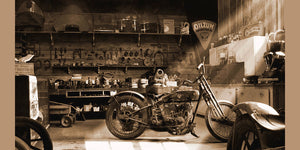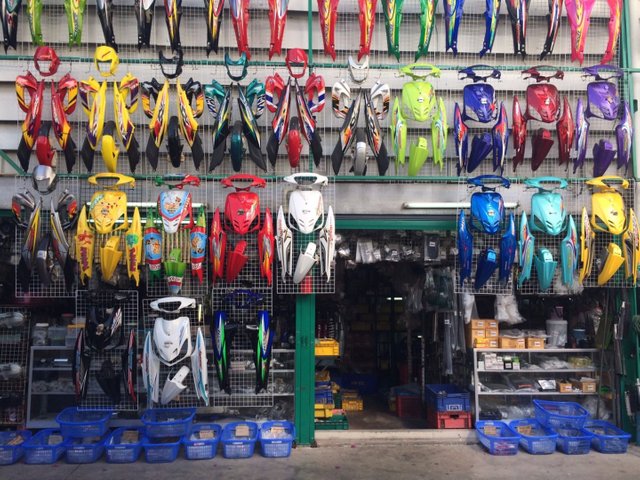Understanding the Necessary Parts of a Motorbike: A Comprehensive Guide for Lovers
For bike fanatics aiming to boost their riding experience and guarantee their bikes run efficiently, recognizing the essential components of a motorcycle is paramount. Each element, from the engine's elaborate workings to the vital role of the braking systems, not only impacts efficiency but also safety and convenience. This overview will certainly stroll with the basic components that every rider should know with, enabling educated selections in both maintenance and prospective upgrades. As we begin this expedition, one must ask: exactly how does each element interact to develop the smooth trip every fanatic looks for?
Engine Components

The camshaft plays an important role in managing the timing of the engine's shutoffs, making certain the precise opening and closing required for effective gas and air consumption, along with exhaust expulsion. This timing is critical to maintaining optimal engine performance and efficiency. Additionally, the carburetor or fuel injection system, depending on the motorcycle model, is accountable for mixing air with fuel in the appropriate ratio for combustion.
The cooling system, either air or liquid-based, works to maintain the engine's temperature level within functional restrictions, preventing overheating and ensuring longevity - mx parts nz. Each part, diligently designed and incorporated, adds to the seamless operation of the engine, specifying the bike's power outcome and overall performance
Transmission System
Indispensable to the motorbike's functionality, the transmission system guarantees effective power transfer from the engine to the wheels. This system comprises numerous important elements, including the clutch, transmission, and last drive, each playing a crucial duty in converting the engine's power right into movement. The clutch, typically run by a hand lever, serves to involve and disengage the engine from the transmission, enabling for smooth equipment changes and controlled velocity.
The gearbox, often described as the transmission appropriate, includes a set of gears that motorcyclists can by hand change through to readjust the bike's speed and torque outcome. These gears are prepared in a series that makes it possible for the bike to increase smoothly and keep ideal engine efficiency across different speeds. A lot of bikes utilize a consecutive transmission, calling for the biker to move gears in an established order.
Braking Devices
While recognizing the transmission system is key to harnessing a bike's power, equally essential is the capacity to manage and stop that power properly, which is where braking systems enter play. Brakes are vital for safety and performance, offering the rider with the necessary control to navigate various surfaces and problems. Commonly, motorbikes include two kinds of braking systems: disc brakes and drum brakes.
Disc brakes are more widespread in contemporary motorbikes as a result of their remarkable efficiency. They consist of a brake disc, caliper, and pads. When triggered, the caliper presses the brake pads against the rotating disc, transforming kinetic energy right into warm, thus slowing the wheel. This system offers better warmth dissipation, regular efficiency, and enhanced quiting power, especially in wet problems.
Conversely, drum brakes, though much less common, why not find out more are still located in some motorcycles. They work by pressing brake footwear versus the internal surface of a drum attached to the wheel. While normally much less reliable in warmth dissipation and stopping power, drum brakes are simpler and extra cost-efficient.
Comprehending these stopping systems' nuances allows bikers to keep their motorbikes effectively and appreciate the engineering that guarantees secure and efficient stopping.
Suspension and Steering
Suspension and guiding systems are vital parts that dramatically affect a motorcycle's handling and experience comfort. The suspension system, including forks at the front and shock absorbers at the rear, absorbs roadway irregularities, enhancing security and control. Front forks, upside down or typically telescopic, compress and rebound to mitigate effects, while back shock absorbers maintain tire contact with the road, crucial for grip and safety and security.
Guiding, focused around the handlebars, links the biker to the motorbike's directional control. The guiding head bearings ensure smooth operation, allowing accurate ability to move. Proper positioning and maintenance of these bearings are critical for predictable guiding action and reducing motorcyclist fatigue.
The suspension's adjustability is one more critical element; preload, damping, and rebound settings permit customization to fit numerous riding conditions and designs. This adaptability is crucial for optimizing efficiency, whether browsing urban streets or dealing with sturdy trails. Advancements like digital suspension systems provide real-time changes, boosting ride quality throughout diverse surfaces.

Electrical Solutions
After making certain a controlled and smooth trip with effective suspension and guiding systems, focus turns to the electrical systems, a critical element of modern-day bikes. These systems play a critical duty not just in beginning the engine but additionally in powering different components that improve the capability and safety and security of the motorcycle.
At the heart of a motorcycle's electrical system is the battery, which stores electrical energy necessary for starting the engine and powering auxiliary systems - motocross gear. The generator or generator, combined with the rectifier-regulator, makes sure the battery stays charged while the motorcycle functions, converting mechanical power right into electrical energy and maintaining voltage levels
The ignition system, one more important element, is accountable for sparking the air-fuel blend in the engine's cyndrical tubes. Modern motorbikes commonly make use of a digital ignition system, using higher efficiency and integrity contrasted to conventional systems.
Lighting systems, consisting of headlights, tail lights, and indicators, are additionally crucial, making sure presence and safety and security for the rider. Added electronic components such as sensing units, control systems, and displays add to sophisticated attributes like gas injection management, anti-lock stopping systems (ABDOMINAL), and digital control panels, additionally enhancing the riding experience.
Conclusion
A thorough comprehension of a bike's motorcycle clothing necessary components, including the engine, transmission system, stopping mechanisms, suspension, steering, and electrical systems, is essential for lovers aiming to enhance convenience, safety, and performance. Mastery of these aspects permits educated decisions concerning maintenance and upgrades, eventually boosting the riding experience. By incorporating this expertise, riders can ensure their motorcycles operate at peak effectiveness and dependability, consequently optimizing both satisfaction and longevity of their cars.
For motorcycle lovers looking to raise their riding experience and ensure their bikes run smoothly, comprehending the essential components of a motorcycle is critical.Important to the bike's capability, the transmission system makes certain reliable power transfer from the engine to the wheels.While recognizing try this out the transmission system is key to taking advantage of a motorbike's power, similarly vital is the capacity to manage and quit that power effectively, which is where stopping systems come into play. Generally, motorcycles include 2 types of braking systems: disc brakes and drum brakes.
A comprehensive comprehension of a bike's important elements, consisting of the engine, transmission system, braking mechanisms, suspension, steering, and electrical systems, is crucial for lovers aiming to maximize efficiency, safety, and convenience.
Comments on “See Our Motorcycle Shop for Professional Recommendations and High Quality Products”